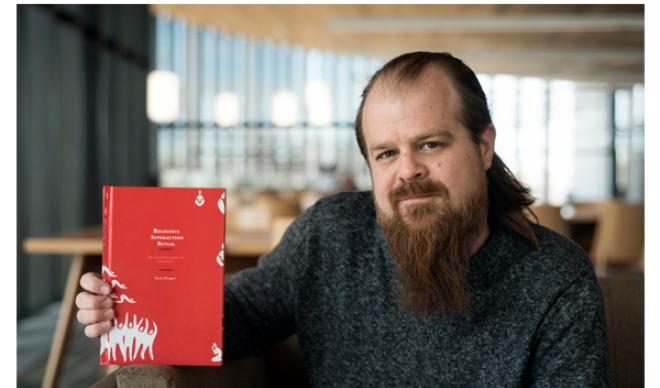
It began as dissertation research while a doctoral student at Baylor University in 2010. In 2019, it became a check mark on life’s bucket list for College of Idaho Associate Professor of Anthropology & Sociology Scott Draper.
Draper’s first book, “Religious Interaction Ritual: The Microsociology of the Spirit,” has been released and can be purchased online via the publisher, Lexington Books. While he said his primary target audience is other scholars, he also wants it to appeal to a wider audience.
“I’ve already used some of the chapters in my own classes,” Draper said. “It is a good text for an upper-level sociology undergraduate course or a graduate course, or more broadly for any reader who seeks to better understand contemporary religious life.”
What Draper accomplishes in the book is changing the narrative, so to speak.
“The prevailing assumption is that religion is what people believe or what they identify as. I’m proposing a reversal of that formula,” Draper explained. “Rather than assume that people practice a certain way because of their beliefs, I’m flipping that around and saying, well, actually, our beliefs emanate from our social practices.”
He accomplished this largely the old fashioned way – by attending services.
“What I’m doing is participant observation,” he said. “I was interested in diverse styles of religious worship, so I went right to the source. I’d closely observe what worshipers were doing. I’d throw myself into each service as much as I could.”
So he’d attend services and talk to congregants, both as individuals and in groups. Conservative Jews, Bible Belt Muslims, white Baptists, black Baptists, Buddhist meditators, and Latino Catholics. He analyzed these encounters using hypotheses from Interaction Ritual Theory, a process which led to one of the surprise discoveries of his research.
“One of the predictions is that a ritual with more co-presence is going to be a more emotionally-intense or successful ritual,” Draper said of the crowd size at religious services. “I discovered that there’s another factor that affects this relationship and has to be considered: the socio-economic statuses of congregations. It’s usually true that larger crowds lead to more effervescence. But, for wealthy congregations, they tend to prefer more personal space during their rituals.”
Draper is furthering his research this spring by talking with other groups, like Jehovah’s Witnesses. While he’s unsure if the current round of research will lead to research articles or perhaps another book project, writing about social theories will continue to be a driving passion. And his topic interests others in the field.
“’Religious Interaction Ritual’ is a great work,” said Randall Collins of the University of Pennsylvania. “This should be a landmark book in the sociology of religion.”
The College of Idaho has a 128-year-old legacy of excellence. The C of I is known for its outstanding academic programs, winning athletics tradition and history of producing successful graduates, including seven Rhodes Scholars, three governors, and countless business leaders and innovators. Its distinctive PEAK Curriculum challenges students to attain competency in the four knowledge peaks of humanities, natural sciences, social sciences and a professional field—empowering them to earn a major and three minors in four years. The College’s close-knit, residential campus is located in Caldwell, where its proximity both to Boise and to the world-class outdoor activities of southwest Idaho’s mountains and rivers offers unique opportunities for learning beyond the classroom. For more information, visit www.collegeofidaho.edu.